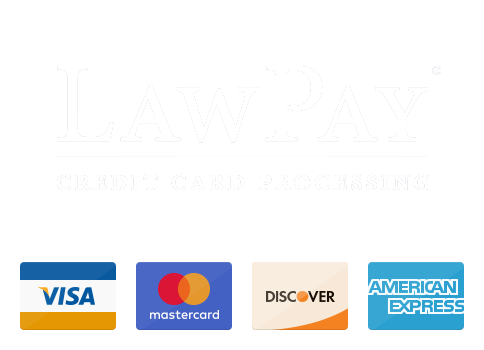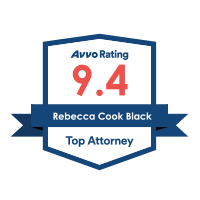The M1 visa is a lesser-known but important non-immigrant visa in the United States. It is designed specifically for individuals who wish to pursue vocational or non-academic training programs in the U.S. This guide will take an in-depth look at the M1 visa, its eligibility requirements, application process, limitations, and more. Whether you are an aspiring student or a professional looking to gain new skills, understanding the M1 visa can open doors to career advancement and personal growth in the U.S.
What is the M1 Visa?
The M1 visa is a non-immigrant visa specifically tailored for foreign nationals who wish to engage in vocational or technical training in the United States. Unlike the F1 visa, which is designed for students pursuing academic degrees, the M1 visa focuses on non-academic or vocational courses. These can include programs such as mechanical studies, culinary arts, flight training, cosmetology, and more.
One of the significant distinctions between the M1 and other student visas, particularly the F1, is the nature of the educational programs. The M1 visa is solely for vocational or technical courses, not for academic degrees. For those who are looking to gain hands-on skills or specialized training in the U.S., the M1 visa could be the perfect fit. These programs are generally shorter in duration and often more career-focused, giving students practical skills they can immediately apply in their professional lives.
Another essential aspect of the M1 visa is its structure and timeline. The M1 visa is typically issued for the duration of the course or program, plus an additional 30 days for departure from the U.S. However, this stay cannot exceed one year unless students seek an extension or transfer. In contrast to the F1 visa, M1 students face stricter limitations in terms of program flexibility and employment opportunities.
Eligibility Requirements for an M1 Visa
Before applying for an M1 visa, it is crucial to understand the eligibility criteria. These requirements ensure that only individuals with genuine vocational and technical training needs are admitted to the U.S. on this visa.
Firstly, applicants must prove that they have been accepted into a vocational or technical school that is approved by the Student and Exchange Visitor Program (SEVP). The institution must be certified to enroll international students, and the course itself must be vocational or non-academic. This distinguishes the M1 visa from the F1, which can cover a wide range of academic programs. Programs that qualify under the M1 visa might include flight schools, technical institutes, culinary schools, or beauty academies.
Additionally, prospective M1 students must demonstrate that they possess the financial resources necessary to cover their tuition fees and living expenses for the entire duration of the course. Unlike the F1 visa, where students have some flexibility in earning money through on-campus work, M1 visa holders face more stringent restrictions on employment. As such, financial stability is a key requirement when applying for this visa.
Lastly, applicants need to prove they have strong ties to their home country and do not intend to stay in the U.S. permanently. The M1 visa is a non-immigrant visa, meaning it is designed for temporary stays. Immigration officers may scrutinize an applicant’s ties to their home country—such as family, property, or a job offer—to ensure that the student will return after completing their studies.
The M1 Visa Application Process
The application process for an M1 visa is straightforward but involves several key steps that must be carefully followed. Being thorough during this process can help ensure the best chance of approval.
To begin, prospective students must apply to and be accepted by an SEVP-approved vocational school in the U.S. Once accepted, the institution will provide the student with a Form I-20, the Certificate of Eligibility for Nonimmigrant Student Status. The I-20 form contains essential details about the student’s course of study, duration, and financial status. The student must review the I-20 form thoroughly and ensure all the information is correct, as this document will play a central role in their visa application.
The next step involves completing the DS-160 form, the standard non-immigrant visa application form, and paying the visa application fee. The SEVIS I-901 fee must also be paid at this stage, which goes towards the maintenance of the Student and Exchange Visitor Information System (SEVIS). After submitting the DS-160, students can schedule an interview at the nearest U.S. embassy or consulate.
During the interview, applicants must present their Form I-20, proof of financial stability, and evidence of ties to their home country, among other documents. The visa officer will assess whether the applicant meets all the eligibility requirements and intends to return to their home country after completing their course. If approved, the M1 visa will be stamped in the applicant’s passport, and they will be ready to travel to the U.S. to begin their vocational training.
Limitations and Restrictions of the M1 Visa
While the M1 visa provides a valuable opportunity for individuals seeking vocational training in the U.S., it comes with several restrictions that prospective students must be aware of. These limitations differ significantly from the more flexible F1 student visa and are designed to ensure that M1 visa holders remain focused on their training.
One of the most notable restrictions is on employment. Unlike F1 visa holders, who can work part-time on-campus during their studies, M1 students are not allowed to work during their studies except under very specific circumstances. After completing their program, M1 students may apply for Optional Practical Training (OPT) for up to six months. However, this OPT must directly relate to the vocational training they received, and the student must apply within 30 days of completing their studies.
M1 visa holders are also limited in terms of their ability to extend or transfer their visas. While an extension can be granted for compelling reasons, the total length of stay, including extensions, cannot exceed three years. Furthermore, transferring from one SEVP-approved school to another is possible but requires approval from U.S. Citizenship and Immigration Services (USCIS). These restrictions mean that students must carefully plan their educational path before committing to a program.
Lastly, the M1 visa is non-immigrant by nature, meaning it does not lead to permanent residency or a green card. This contrasts with certain F1 visa pathways, where students can transition to work visas or even green cards through employment sponsorship. Therefore, the M1 visa is strictly for temporary educational purposes, and holders must leave the U.S. once their training is complete or their visa expires.
How Our Law Firm Can Help You Secure an M1 Visa
Applying for an M1 visa can be a complex and often daunting process. Whether you’re confused about eligibility requirements, uncertain about financial documentation, or need help navigating the interview process, our experienced immigration attorneys are here to assist you.
At Rebecca Black Immigration, PA, we have years of experience in helping students and professionals secure visas for vocational and technical training programs in the U.S. We understand the unique challenges faced by M1 visa applicants and are committed to guiding you every step of the way—from choosing the right educational program to submitting your visa application and preparing for your consular interview.
Our attorneys can also assist with potential challenges, such as requesting visa extensions or applying for Optional Practical Training (OPT) after completing your course. With our expertise, you can have peace of mind knowing that your application is in the best possible hands. Contact us today for a consultation, and let us help make your dream of gaining vocational skills in the U.S. a reality.






